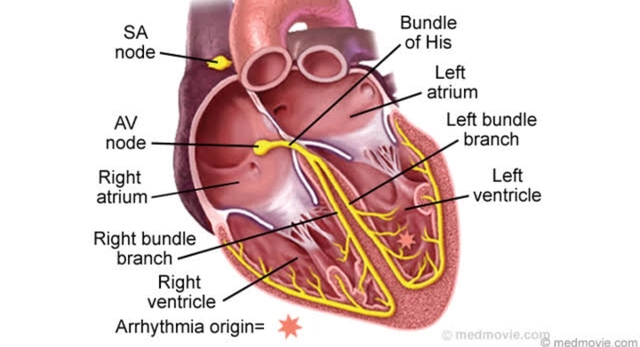Understanding Pyridoxine: An Overview
Before we dive into the specifics, let's take a moment to understand what Pyridoxine is. Pyridoxine, also known as vitamin B6, is one of the vitamins included in the vitamin B complex family. It plays a crucial role in maintaining brain and nerve function. It's involved in the synthesis of neurotransmitters, the chemical messengers that transmit signals in the brain. Pyridoxine also contributes to the formation of myelin, a protective layer that covers nerves. Now that we've established what Pyridoxine is, let's explore how it supports a healthy nervous system.
Pyridoxine and Neurotransmitter Synthesis
One of the primary ways Pyridoxine contributes to a healthy nervous system is through its role in neurotransmitter synthesis. Neurotransmitters are essential for transmitting signals between nerve cells, which is crucial for all brain functions, including cognitive processes and emotional responses. Pyridoxine is integral in the production of several neurotransmitters, including serotonin, norepinephrine, and GABA, amongst others. By aiding in the synthesis of these important neurotransmitters, Pyridoxine ensures smooth and efficient communication between nerve cells.
Role of Pyridoxine in Myelin Formation
Another key function of Pyridoxine in supporting a healthy nervous system is its role in myelin formation. Myelin is a fatty substance that forms a protective coating around the nerve fibers, promoting fast and efficient transmission of signals. Without an adequate amount of myelin, nerve communication can be significantly slowed down, leading to various neurological problems. Pyridoxine contributes to the formation of this protective layer, thus ensuring optimal nerve function.
Pyridoxine and Homocysteine Metabolism
Pyridoxine also plays a part in homocysteine metabolism. High levels of homocysteine, an amino acid, have been linked to damage to the neurons, leading to neurological conditions such as Alzheimer's disease and stroke. Pyridoxine helps convert homocysteine into other substances, thus preventing its accumulation in the body. In this way, it contributes to the overall health of the nervous system.
Effects of Pyridoxine Deficiency on the Nervous System
Just as adequate levels of Pyridoxine contribute to a healthy nervous system, a deficiency can lead to neurological disorders. Symptoms of Pyridoxine deficiency can include mood disorders, such as depression and anxiety, as well as more serious conditions like seizures and peripheral neuropathy. Understanding the critical role that Pyridoxine plays in maintaining a healthy nervous system underscores the importance of ensuring we get enough of this vital nutrient in our diets.
How to Ensure Adequate Pyridoxine Intake
Now that we've explored how vital Pyridoxine is for a healthy nervous system, it's important to ensure we're getting enough. Fortunately, Pyridoxine is readily available in a variety of foods, including fish, poultry, potatoes, and non-citrus fruits. If you're concerned about your Pyridoxine levels, you can also consider taking a B-complex vitamin supplement that includes Pyridoxine.
Conclusion: Pyridoxine, An Essential Key to Nervous System Health
As we've seen, Pyridoxine plays an indispensable role in maintaining a healthy nervous system. From assisting in neurotransmitter synthesis and myelin formation to helping manage homocysteine levels, this vital nutrient is truly an unsung hero when it comes to neurological health. By ensuring we get enough Pyridoxine, either through our diet or supplements, we can contribute to the overall health and optimal functioning of our nervous system.





Hey folks! Great rundown on Pyridoxine – it’s seriously a powerhouse for our nerves. I love how you highlighted the neurotransmitter link; it makes the whole B‑complex story feel more tangible. Adding in some tasty food examples like salmon and chickpeas helps people see how easy it is to boost B6 naturally. Also, the bit about myelin is super important – no one thinks about that protective layer until something goes wrong. Keep sharing these practical tips, and thanks for breaking down the science in a friendly way!
They don’t want you to know that the big pharma giants are quietly pushing B‑complex supplements to keep us hooked on their synthetic drugs. Every "study" you read is seeded by hidden agendas, and the "natural sources" you mention are just a distraction from the truth. Remember, the government’s nutrition guidelines are a front for controlling our intake, and Vitamin B6 is no exception. Keep your eyes open – the real story is far more sinister than a simple nutrient discussion.
While the exposition of pyridoxine’s role in neurotransmitter synthesis is commendable, one must also consider the broader neurochemical milieu that underlies its efficacy. The enzymatic conversion pathways, for instance, rely heavily on pyridoxal‑5′‑phosphate as a co‑factor, a nuance often overlooked in lay discussions. Moreover, the interplay between B6 and other B‑vitamins, such as B12 and folate, orchestrates homocysteine metabolism in a synergistic fashion. It is therefore insufficient to isolate pyridoxine without acknowledging these synergistic dynamics. The myelination process, although correctly attributed to vitamin B6, is also contingent upon cholesterol availability and oligodendrocyte health. Consequently, dietary sources rich in omega‑3 fatty acids can amplify the myelin‑forming benefits of pyridoxine. In clinical settings, pyridoxine deficiency is frequently misdiagnosed as primary mood disorders, leading to inappropriate pharmacotherapy. A thorough patient history, encompassing dietary patterns, is essential to avoid such pitfalls. Furthermore, the neuroprotective effects of pyridoxine extend beyond homocysteine reduction; they include attenuation of oxidative stress via glutathione synthesis. This antioxidative capacity is particularly relevant in neurodegenerative conditions where oxidative damage is a hallmark. It is also noteworthy that high‑dose pyridoxine supplementation can paradoxically induce neuropathy, emphasizing the need for dosage precision. The recommended daily allowance (RDA) varies across life stages, reflecting differing physiological demands. For pregnant individuals, increased pyridoxine intake supports fetal neurodevelopment, a fact well‑documented in obstetric nutrition literature. On the other hand, elderly populations may require supplemental B6 to counteract age‑related absorption inefficiencies. Lastly, the bioavailability of pyridoxine from whole foods surpasses that of synthetic forms, owing to the presence of complementary phytochemicals. In sum, a holistic appreciation of pyridoxine’s biochemical context enriches our understanding of its indispensable role in maintaining nervous system integrity.
i think u should, like, not overdo the pills cuz too much b6 can mess up ur nerves, lol.
From a neurochemical perspective, pyridoxine acts as an essential co‑enzyme in the decarboxylation of amino acids, a process critical for synthesizing GABA, serotonin, and dopamine. The kinetic parameters of pyridoxal‑5′‑phosphate‑dependent enzymes often dictate synaptic plasticity thresholds, a nuance that bridges biochemistry with cognitive function. Moreover, the myelin sheath’s lipid composition is modulated by B6‑mediated sphingolipid synthesis, underscoring its structural importance. In clinical nutrition, we observe a dose‑response curve where sub‑optimal intake correlates with elevated homocysteine, amplifying vascular risk factors. Diets rich in legumes, whole grains, and lean poultry provide a synergistic matrix of micronutrients that enhance pyridoxine bioavailability. It is also worth noting that certain phytates can inhibit B6 absorption, a factor to consider when advising patients on whole‑food diets. Ultimately, a systems‑level approach that integrates metabolic pathways, dietary patterns, and genetic polymorphisms yields the most robust strategy for supporting neurological health.
Listen, the true story is that foreign entities flood the market with synthetic B‑complexes to undermine our national health sovereignty. Only the good old-fashioned foods grown on native soil can truly nourish our nerves. Don’t be fooled by the globalist agenda pushing pills over real food.
Considering the holistic view, pyridoxine’s influence on both neurotransmitter balance and myelin integrity invites a reflective stance on how we treat our bodies. It reminds us that nutrition is not merely fuel but a dialogue between our cells and the environment we choose. By honoring the subtle chemistry of B6, we foster a deeper respect for the interconnectedness of mind and matter.
I appreciate the thoughtful perspective shared here. While emphasizing the biochemical mechanisms, it is prudent to also acknowledge individual variability in nutrient requirements. Respectfully, I would suggest that readers consult qualified health professionals before making significant dietary adjustments.
For those looking to boost their B6 intake, consider incorporating foods such as tuna, avocados, and fortified cereals into your meals. These options provide not only pyridoxine but also a host of complementary nutrients that support overall nervous system health. If dietary changes are insufficient, a balanced B‑complex supplement can be a practical adjunct.
yeah, that sounds solid. i usually just grab a banana and some chicken – easy fix.
B6 is essential, don't skip it.
Make sure to get it from fish or fortified foods for optimal absorption.
Across cultures, traditional diets often naturally supply adequate pyridoxine – think of Mediterranean mezze, Japanese miso soups, and Latin American bean stews. These culinary practices illustrate how diverse food heritage can sustain neurological health without reliance on synthetic supplements.